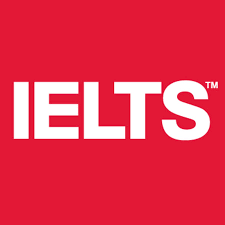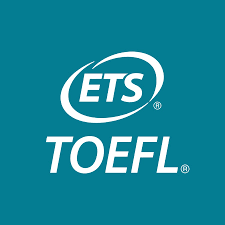To measure language skills, many colleges look at how an applicant fared on a standardized English language assessment.
Students attending a college or university in the U.S. have to submit certain documents to be considered for admission, like their high school transcript, essays, teacher recommendations and, in some cases, SAT or ACT test scores. But that list of requirements is longer for international students, who often also need to demonstrate English proficiency.
To measure language skills, many colleges look at how an applicant fared on a standardized English language assessment. One exam option is the Test of English as a Foreign Language, known as TOEFL, which is administered by the Educational Testing Service, a nonprofit that conducts educational research with an emphasis on testing.
From qualifying scores to the layout of the exam, here's what to know about TOEFL and how it compares to IELTS.
What Is the TOEFL Exam?
TOEFL has evolved since its inception in 1964. Originally created as a paper-based test, TOEFL transitioned to computer-based in 1998 and then to an internet-based exam in 2005, known as the TOEFL iBT. Though administered by computer, the TOEFL iBT is taken in person at an ETS-authorized testing center.
There are now some exceptions to that rule. The coronavirus pandemic prompted the launch of an at-home version of the test – the TOEFL iBT Home Edition, which uses a live proctor. The TOEFL iBT and TOEFL iBT Home Edition share the same content: four timed sections in the skill areas of reading, listening, speaking and writing.
The TOEFL iBT Home Edition isn't the only new test from ETS. Added in August 2021, the TOEFL Essentials Test measures the same four skills as the TOEFL iBT. But it's half the length – 90 minutes – and emphasizes a combination of academic and general English skills, rather than just academic language. More universities are expected to accept it in the future.
TOEFL vs. IELTS
TOEFL and IELTS are thematically the same, covering four skill areas: reading, writing, listening and speaking. But TOEFL iBT's content covers all academic English, while IELTS is split between academic and general everyday English, Gopal says.
There are also slight differences in length, scores, grading, cost and acceptance rates.
Length
IELTS, which is jointly owned by the British Council, IDP: IELTS Australia and Cambridge Assessment English, offers two types of tests: IELTS Academic or the IELTS General Training. The IELTS General Training exam is geared more toward test-takers looking to work in or immigrate to an English-speaking country, while IELTS Academic is for students planning to earn their degree abroad.
Both IELTS tests have a total test time of two hours and 45 minutes with no breaks. The listening, reading and writing sections are completed in the same day, while the speaking section can be taken up to a week before or after the rest of the exam.
In the 30-minute listening section of the IELTS Academic exam, test-takers must listen to four recordings from native English speakers and answer 40 questions . The reading section is 60 minutes with a total of 40 questions that test skills like reading for main ideas, reading for detail, skimming and understanding logical arguments. As for the writing section, test-takers are given two tasks to complete – writing an essay and describing visual information in their own words – in the 60-minute time frame.
Lastly, the speaking section lasts between 11 and 14 minutes, and is a recorded oral interview with an examiner.
Meanwhile, TOEFL is slightly longer than IELTS, totaling about three hours with a 10-minute break.
The reading section is 54 to 72 minutes with three or four reading passages that come from textbooks taught at the university level. There are 10 questions for each passage. The listening section is 41 to 57 minutes long, with three or four lectures and two or three conversations. Lectures range from three to five minutes and conversations are three minutes each.
The 17-minute speaking section includes four tasks that resemble real-life scenarios students might encounter inside and outside the classroom. Unlike IELTS, there's no interaction with an examiner. Test-takers have 15 to 30 seconds to prepare for a 45 to 60 second response that is recorded through a microphone and sent to ETS.
Additionally, the writing section consists of two tasks, an essay and response to a reading or recording, for a total of 50 minutes.
Cost
Both exams are similarly priced in the U.S., though costs vary per country. Taking the IELTS exam in the U.S., for instance, costs between $245 and $255, while TOEFL charges $245.
Registration can be completed online. Visit the IELTS and ETS websites for more information. During the registration process, test-takers are typically required to create an account and are directed to their nearest testing center.
Scoring
IELTS relies on certified markers and examiners to grade exams, while TOEFL uses a combination of AI and certified human raters, depending on the section.
Each section of TOEFL has a score range of 0-30 and test-takers can earn a total possible score of 120. Scores are released as soon as six business days after the test date, depending on which TOEFL test was taken.
The price of the test also includes free submission of up to four score reports. Score report recipients can be added through a test taker's ETS account until the night before the exam. Each additional report costs $20 and scores are valid for two years.
On the other hand, IELTS is graded on a band scale of 0 (did not attempt) to 9 (expert). A score is given for each section, which is then averaged to produce an overall score.
Test-takers usually receive their results in three to five days after the test date, though it takes longer for those who opted for the paper version. Results can be sent to up to five organizations for free.
Where It's Accepted
TOEFL is accepted at more than 11,500 universities and institutions in over 160 countries around the globe, according to ETS. It's accepted everywhere in the U.S.
IELTS is accepted by more than 11,000 organizations – including universities, companies, government organizations and migration agencies – across 140 countries. More than 3,400 institutions in the U.S. accept IELTS, according to its website.
There's some nuances in the differences in the language. If a student went through a British curriculum, they might find the IELTS a little more friendly or accessible than the TOEFL. Where if they had more Western, U.S.-based education, then they would maybe find the TOEFL a little more accessible. But typically they are quite similar.



Σχόλια